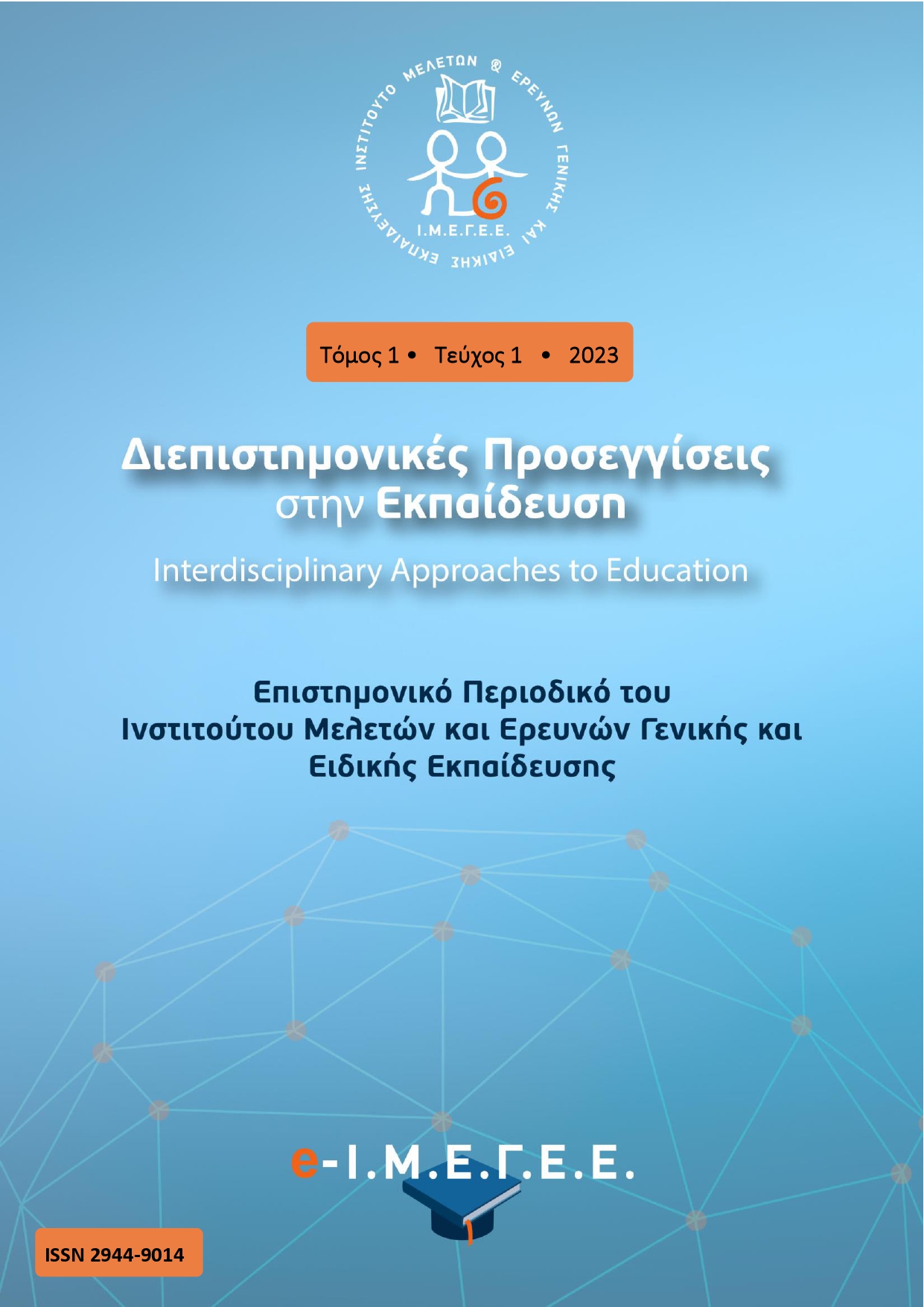Adolescents’ anxiety and locus of control in relation to rerceived parental practices and parenting
Abstract
Στην παρούσα έρευνα διερευνήθηκαν τα επίπεδα άγχους των εφήβων και η έδρα ελέγχου σε συσχέτιση με τις αντιλαμβανόμενες πρακτικές ανατροφής και τη γονικότητα. Έχει αναδειχθεί ερευνητικά ότι οι γονικές πρακτικές ανατροφής και η εξωτερική έδρα ελέγχου συσχετίζονται με το άγχος στα παιδιά, ενώ περιορισμένος αριθμός ερευνών έχουν εστιαστεί στη συσχέτιση αυτή κατά την περίοδο της εφηβικής ηλικίας. Το δείγμα της παρούσας έρευνας αποτέλεσαν 286 έφηβοι της Γ’ Γυμνασίου και Α’ και Β’ Λυκείου σχολείων της Αττικής. Στους συμμετέχοντες χορηγήθηκαν το Spence Children’s Anxiety Scale (SCAS) για τη μέτρηση των επιπέδων άγχους, το Nowicki-Strickland Locus of Control (NSLOC) για την έδρα ελέγχου και το Egna Minnenav Barndoms Uppforstran (EMBU-My Memories of Upbringing) για τις αντιλαμβανόμενες γονικές πρακτικές. Τα αποτελέσματα της μελέτης καταδεικνύουν θετική συσχέτιση ανάμεσα στην προσλαμβανόμενη γονική υπερπροστατευτικότητα, την απόρριψη, την έδρα ελέγχου, αλλά και το άγχος. Επίσης, καταδεικνύεται ότι οι γονικές πρακτικές και πιο συγκεκριμένα η πατρική απόρριψη, η μητρική υπερπροστατευτικότητα και η έδρα ελέγχου μαζί με το φύλο ερμηνεύουν το 49% της διασποράς του άγχους των εφήβων. Τέλος, από την μελέτη καταδεικνύεται και ότι η έδρα ελέγχου διαδραματίζει διαμεσολαβητικό ρόλο ανάμεσα στη γονική υπερπροστατευτικότητα και το άγχος. Τα ερευνητικά αποτελέσματα της παρούσας έρευνας δείχνουν ότι οι προσλαμβανόμενες από τους εφήβους γονικές πρακτικές ανατροφής μαζί με την έδρα ελέγχου σχετίζονται και μπορούν να προβλέψουν τα επίπεδα άγχους. Η παρούσα έρευνα συμβάλλει αθροιστικά στην αποσαφήνιση και στην καλύτερη κατανόηση των μηχανισμών που διαπερνούν τη σχέση ανάμεσα στις γονικές πρακτικές και το άγχος των εφήβων.
Article Details
- How to Cite
-
Griva, P., Πολυχρόνη Φ., & Τσαρουχάς Ν.-Θ. (2023). Adolescents’ anxiety and locus of control in relation to rerceived parental practices and parenting. Interdisciplinary Approaches to Education, 1(1). https://doi.org/10.12681/.34361
- Section
- Articles
Ενημέρωση για τα πνευματικά δικαιώματα
Οι συγγραφείς των άρθρων που δημοσιεύονται στο περιοδικό διατηρούν τα δικαιώματα πνευματικής ιδιοκτησίας επί των άρθρων τους, δίνοντας στο περιοδικό το δικαίωμα της πρώτης δημοσίευσης. Άρθρα που δημοσιεύονται στο περιοδικό διατίθενται με άδεια Creative Commons 4.0 και σύμφωνα με την άδεια μπορούν να χρησιμοποιούνται ελεύθερα, με αναφορά στο/στη συγγραφέα και στην πρώτη δημοσίευση για μη κερδοσκοπικούς σκοπούς και με δικαίωμα τροποποίησης μόνον με παρόμοια διανομή (αν αναμείξετε, τροποποιήσετε, ή δημιουργήσετε πάνω στο υλικό, πρέπει να διανείμετε τις δικές σας συνεισφορές υπό την ίδια άδεια όπως και το πρωτότυπο).
Απαγορεύεται η αντιγραφή, αποθήκευση και διανομή της παρούσας εργασίας, εξ’ολοκλήρου ή τμήματος αυτής, για εμπορικό σκοπό. Επιτρέπεται η ανατύπωση, αποθήκευση και διανομή για σκοπό µη κερδοσκοπικό, εκπαιδευτικής ή ερευνητικής φύσης, υπό την προϋπόθεση να αναφέρεται η πηγή προέλευσης και να διατηρείται το παρόν µήνυµα. Ερωτήματα που αφορούν τη χρήση της εργασίας για κερδοσκοπικό σκοπό πρέπει να απευθύνονται προς τους συγγραφεα-είς. Οι απόψεις και τα συμπεράσματα που περιέχονται σε αυτό το έγγραφο εκφράζουν το-ους συγγραφέα-είς και δεν πρέπει να ερμηνευθεί ότι αντιπροσωπεύουν τις επίσηµες θέσεις του Ινστιτούτου Μελετών και Eρευνών Γενικής και Ειδικής Εκπαίδευσης (Ι.Μ.Ε.Γ.Ε.Ε.).
Copyright notice
Authors retain copyright and grant the journal right of first publication with the work simultaneously licensed under a Creative Commons Attribution NonCommercial License that allows others to share the work with an acknowledgement of the work's authorship and initial publication in this journal.




